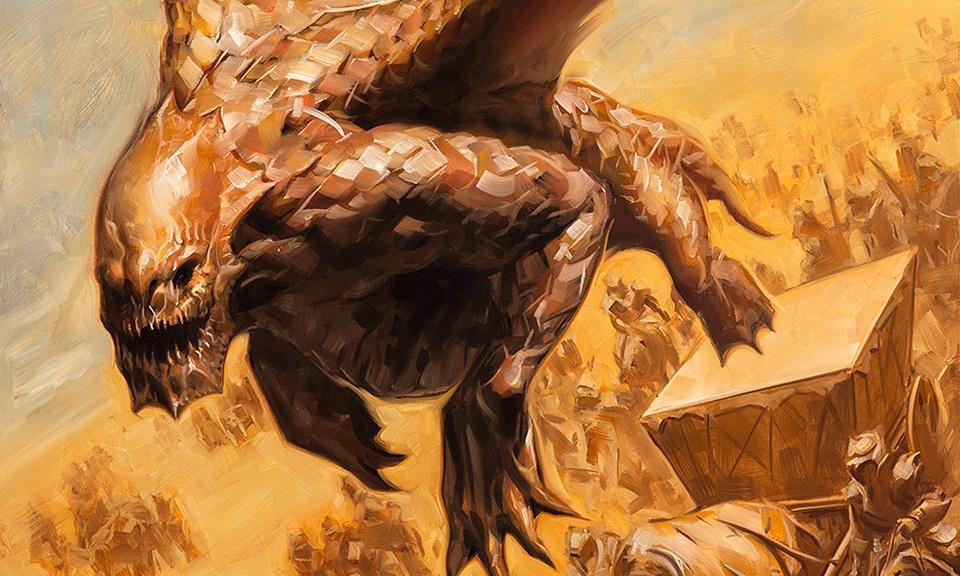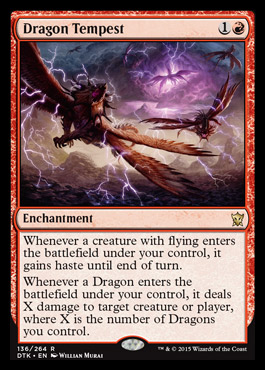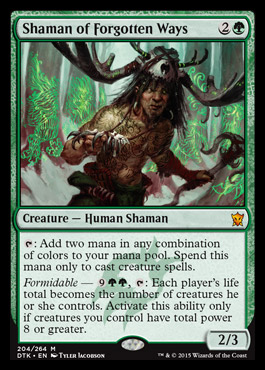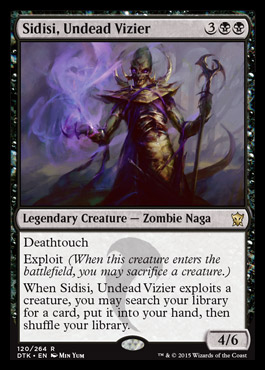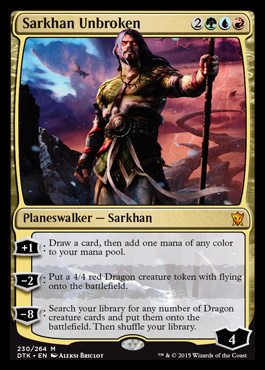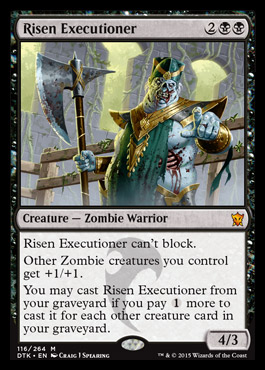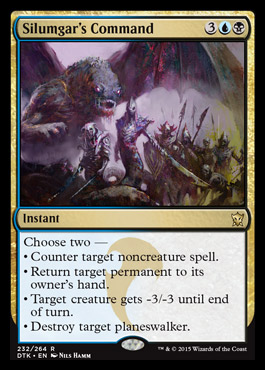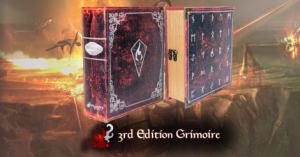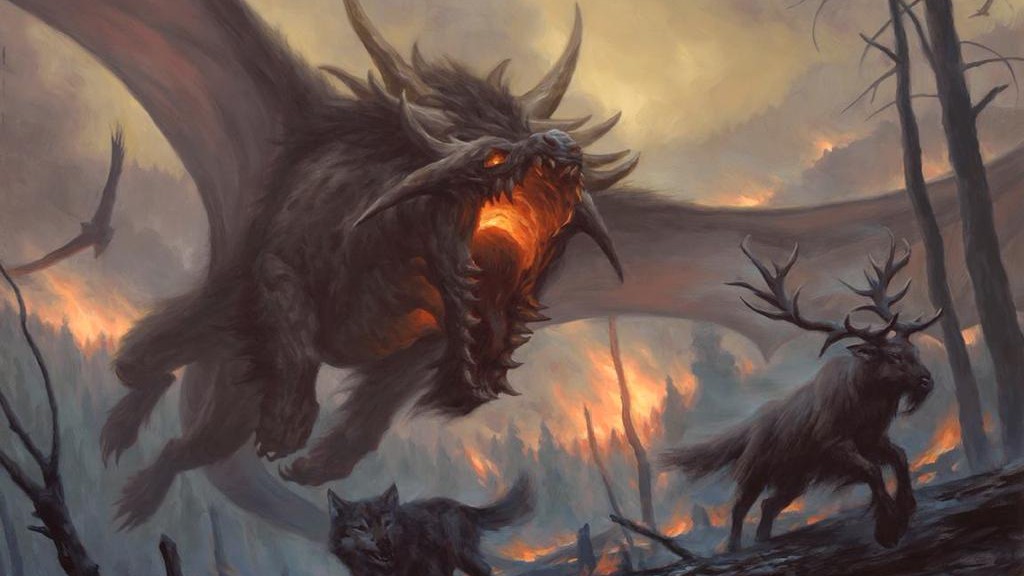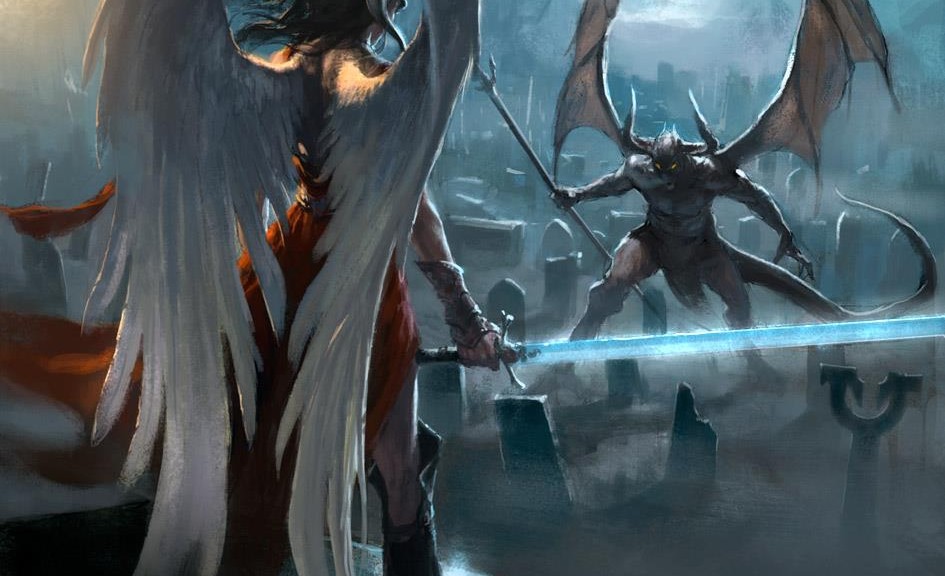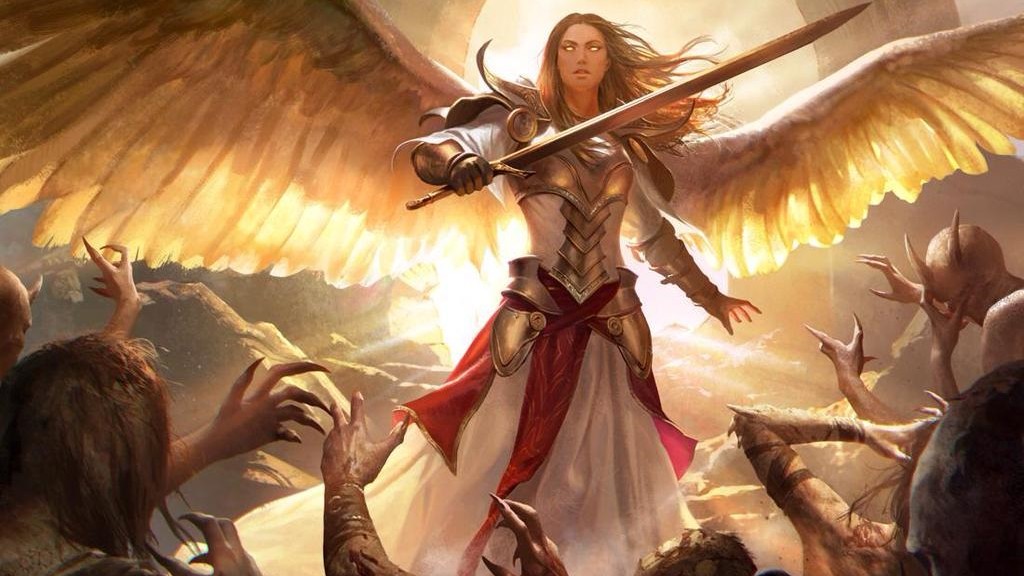By: Cliff Daigle
I play a lot of Commander games. I used to play even more, but with my family’s growth the last couple of years, my EDH time isn’t what it used to be. Nonetheless, I keep my decks updated when new sets come out. I usually tell people to know what they will take out before you go and add new cards, but I usually end up getting the new card and then figuring it out.
I am working from an incomplete spoiler. Next week, I’ll be completing the list and targeting prices.
I can’t remember if I have introduced you to my six decks, so here we go!
Existing Commander Decks
Commander: Adun Oakenshield
Philosophy: “Creatures rule!”
This deck has six noncreature spells: Lavalanche, Xenagos, the Reveler, Garruk, Caller of Beasts, Green Sun’s Zenith, Lurking Predators, and See the Unwritten. Everything else is a creature, and I want to focus on spell-like creatures in this deck. Mostly, it’s enter the battlefield effects, but I keep some others around like Viridian Zealot in case of Torpor Orb.
Commander: Kaalia of the Vast
Philsophy: Wreck some face!
I have spent the time and energy and money to get this manabase ‘perfect.’ There’s three fetches, three duals, three shocks, three filters, three buddy lands…you get the idea. This is my most competitive deck, capable of the fastest kills, and the most expensive, due to the Angel foils that just keep climbing! I have a mix of Angels, Dragons, and Demons because I don’t want to choose just one!
Commander: Garza Zol, Plague Queen
Philosophy: Shiny Vampire Control
I didn’t intend for this to become my all-foil deck, but it happened. I kept finding shiny replacements, and then it was just a few cards…and now it’s done. The vampire tribe is surprisingly strong, dating back to 2011 Standard: Bloodghast into Nighthawk into Nocturnus can end even Commander games fast. I’ve got a lot of fun and flexible control cards, and my MPR cards are here too.
Commander: Sliver Queen
Philosophy: For the Swarm!
This is my token deck. I try to have about a third of the cards be an army contained on one card, including Planeswalkers that make tokens. Everything else contributes to big mana and winning more. It’s five colors but light on nonbasics, so I use a lot of green mana fixing.
Commander: Experiment Kraj
Philosophy: Incredible abilities without going infinite
While I have lots of fun ways to untap Kraj for profit, I’ve shied away from any infinite-mana shenanigans. I found that style of deck to be unfun. The best card in here is probably Reveka, Wizard Savant, as a great way to deal damage.
Commander: Balthor the Defiled
Philosophy: Rise and rise again!
This zombie tribal deck is a lot of fun, as I have lots of mass reanimation and that’s what the general is for as well, sorcery-speed mass return. The combination of Vengeful Dead and Noxious Ghoul do a lot of work, and a sneaky-great zombie is actually Gutless Ghoul, giving a sacrifice for profit.
Pickups from Dragons
Dragon Tempest – Kaalia decks are going to love this card. Very few Angels, Demons, or Dragons don’t have flying, and having Kaalia enter with Haste is quite awesome. This will be a strict upgrade over Fervor for me. I will be trying to get a foil around $3-$5, but this will be a bulk card before long.
Shaman of Forgotten Ways – I’ve tried Somberwald Sage in decks in the past, and found it underwhelming. Acceleration and fixing are not as needed in 99-card formats. The additional ability on this, though, is an ability that has been deemed too good on a sorcery: Biorhythm. I will be picking this up from every trade binder I see it in. I want regular ones around $5 by the end of April. The foils will probably not go below $20 for a while, if at all.
Sidisi, Undead Vizier – Just amazing in my zombie deck. I’ve no shortage of things to Exploit for profit, and this is something I’ll be happy to do over and over again. This appears to be good enough for Standard, so I think it’ll stay between $5-$10 for the next couple of months. Foils should easily be $15, if not more.
Sarkhan Unbroken – I will put one of these into my Sliver Queen deck, because of the token ability. I will never ultimate this, since there aren’t any Dragons in that deck. The first two abilities are just so good, you’ll need to have him in a dedicated Dragon deck to ever really have the ultimate be worthwhile. I think this is one of the best cards in Standard, if you can cast it, and I have a hard time thinking this will be less than $30 at any point. I want a foil, but I’m not going to drop $100 on it.
Risen Executioner – Another easy addition to my Balthor deck, as it’s a zombie lord. I might sometimes pay the tax on recasting this, but mostly it’ll be there alongside Cemetery Reaper and the like. I think this will be a bulk mythic fast, and the foils should hover around $5.
Silumgar’s Command – I’m already playing Spite//Malice and I’m trying to decide if this is good enough to be included as well, or if I’ll just be replacing it. I’ve got Countersquall as well, so I’m going to try and fit this in. Bloodlord of Vaasgoth just isn’t pulling his weight…
I expect this command to be around $1/$4 for the foil, and I’m okay picking it up at that price. The modes are good enough that I think it’ll keep value for a while. The ‘noncreature spell’ part is most relevant, as there’s few enough creatures that need countering. That’s what Wrath effects are for.
Those are the five cards I’m planning on adding, next week with the full spoiler I’ll talk about some of the cards that are almost there, and the ones you’ll see a lot in casual games.
On an unrelated note, I want to clue you all in to Channel Fireball’s “Yard Sale” and a finance trick I’ve been using for years.
Full Disclaimer: I don’t work for Channel Fireball, though I do live in driving distance of their shop. This month, they are having a series of sales, and it’s the sort of thing that Star City has done, and other sites too. Systematic sales are your chance to exchange cards at a fair rate with full value.
Allow me to explain. Normally, when you deal with a vendor, you are never going to get the full retail value of your card. You’re going to get around 40-50% of its value in cash, and maybe 70-80% if you choose store credit.
These wide-scale sales allow you to get cards at enough of a discount to make it tempting to trade directly with a store. Here’s an example:
Hero’s Downfall has a Fair Trade Price of $7.54 as I write this. Anafenza, the Foremost, has a FTP of $7.81. I would happily trade my Downfall for your Anafenza, since it’s so close in price. However, lots of people are savvy to the fact that Downfall is going to rotate out in a few months and tank in value, while Anafenza has nowhere to go but up as a Standard card and a Tiny Leaders powerhouse. So you would have trouble finding someone to make this trade with.
Enter the vendor’s sale. Channelfireball will give four dollars in cash for Hero’s Downfall, with a 30% bonus for store credit ($5.20) and their sale currently has Anafenza down to $5.99. This is not perfect, as you see, but it’s pretty close and it’s an effective tool to use when a vendor decides to hold a sale.
You don’t have to spend the store credit during the sale, but doing so allows you to treat a vendor as a trading partner who gives nearly equal value, which is something that doesn’t happen often. Enjoy!
ADVERTISEMENT: Checkout the brand new 3rd edition Grimoire Deck Box – a card storage for your inner red mage with capacity over 1000+ cards.
